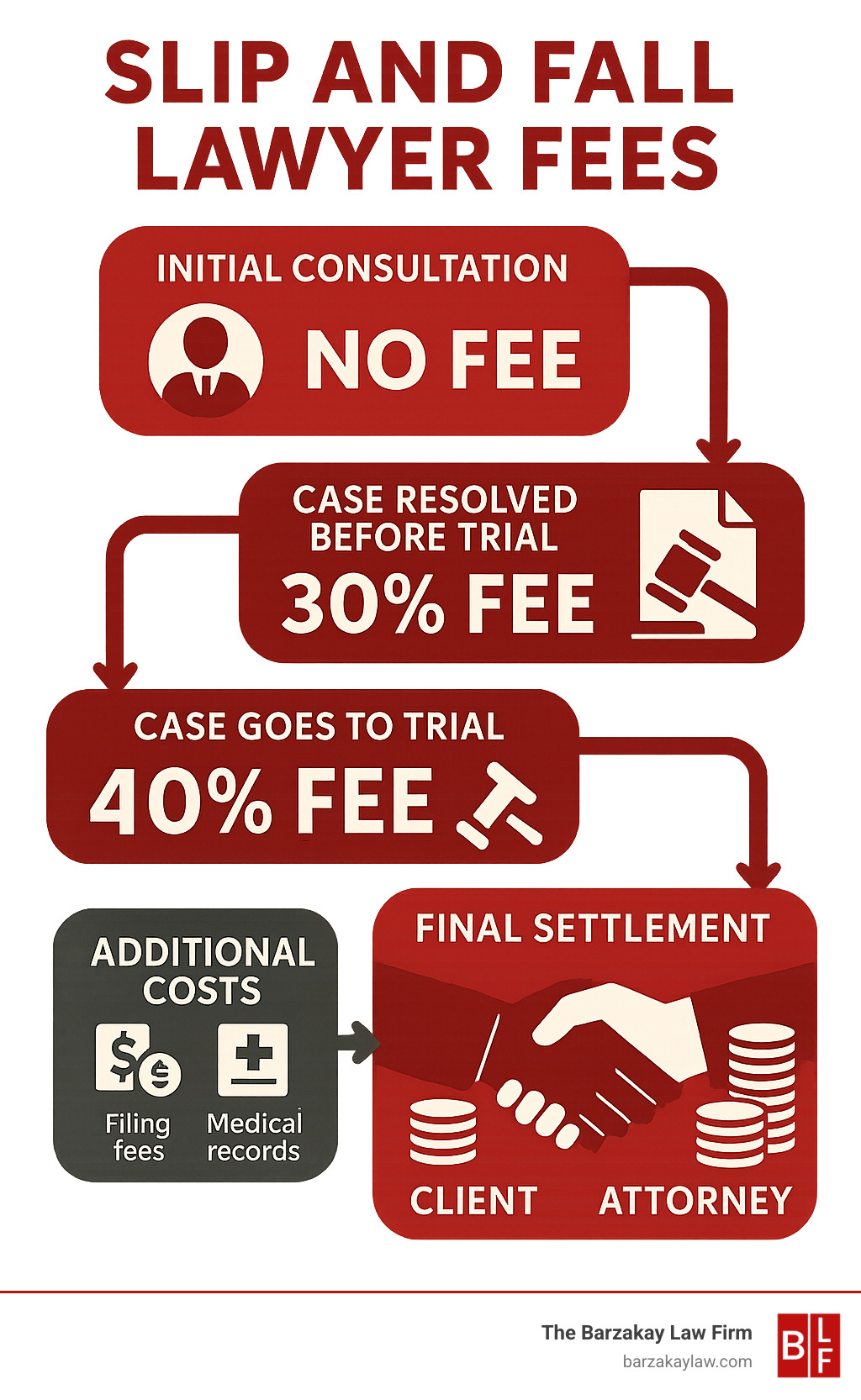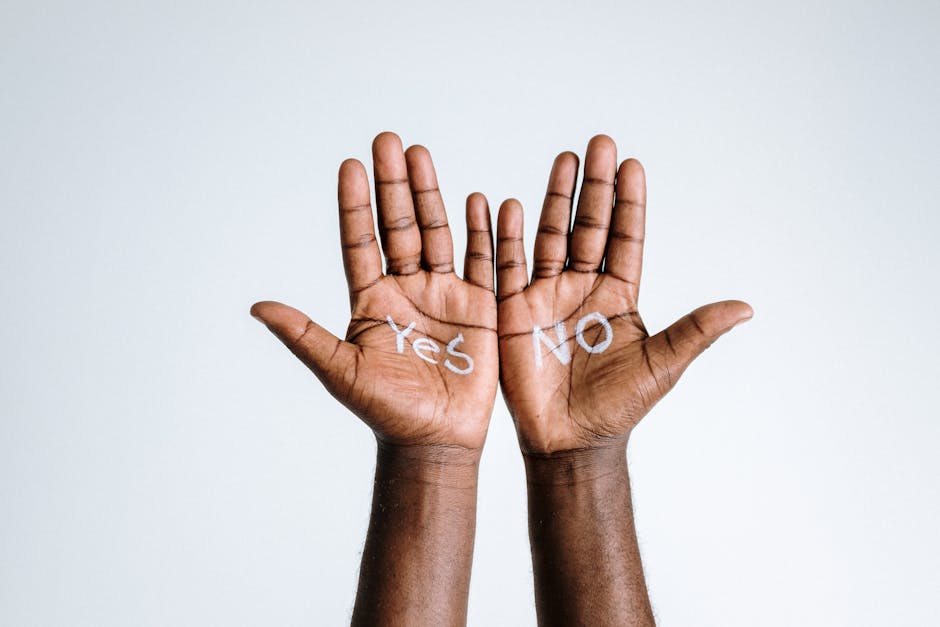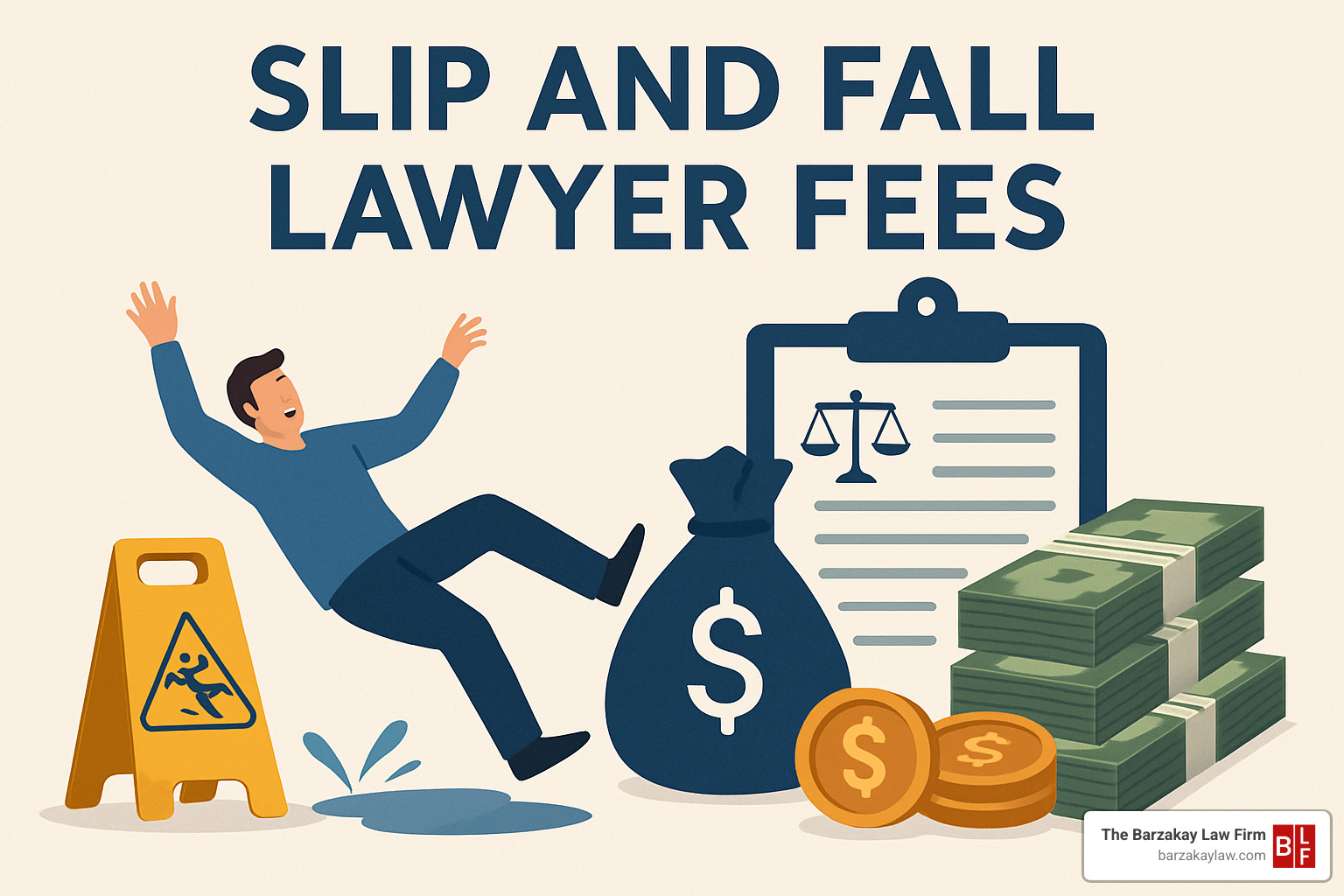Understanding the Cost of Legal Help After a Slip and Fall
Slip and fall lawyer fees can feel overwhelming when you’re already dealing with injuries, medical bills, and the stress of an accident. Most people worry about how much legal help will cost – especially when money is already tight.
Here’s what you need to know about slip and fall lawyer fees:
- Most lawyers work on contingency – you pay nothing upfront
- Standard fees range from 30-40% of your settlement
- No win = no attorney fees in most cases
- Additional costs (filing fees, medical records) may apply
- Fees often increase if your case goes to trial
The good news? You don’t need money in your pocket to get legal help. Most slip and fall lawyers use a “contingency fee” model. This means they only get paid if you win your case.
Think of it like this: your lawyer becomes your partner. They invest their time and resources upfront. If they can’t get you money, they don’t get paid either.
But there are details you need to understand. Fee percentages can change based on how far your case goes. Extra costs might come out of your settlement. And some lawyers structure their fees differently than others.
When you’re facing mounting bills, the last thing you want is surprise costs or confusing legal fees. Understanding how slip and fall lawyer fees work puts you in control of your decisions.

How Slip and Fall Lawyers Charge

When you’re hurt in a slip and fall accident, understanding how lawyers charge for their services can feel like learning a foreign language. But it’s actually straightforward once you know the basics.
Most slip and fall lawyers work on contingency fees. This means you don’t pay anything upfront – not a single dollar. Your lawyer only gets paid if they win money for you.
The American Bar Association insights on fees show that slip and fall lawyer fees typically range from 33% to 40% of whatever money you recover. So if you win $100,000, your lawyer takes between $33,000 and $40,000. The rest goes to you.
Here’s the math that matters: If your lawyer can’t get you money, they don’t get paid either. This creates a powerful incentive – your lawyer only wins when you win.
While contingency fees dominate slip and fall cases, some lawyers offer different arrangements. Hourly billing runs from $100 to $500+ per hour. Flat fees work for simple cases. Retainer fees require money upfront. Hybrid models combine lower contingency percentages with some hourly charges.
Most lawyers use a sliding scale where the percentage increases as your case gets more complicated. You’ll pay 30% if your case settles before filing a lawsuit, 35% if it settles after filing but before trial, and 40% if your case goes to trial.
| Fee Structure | When Used | Typical Range | Pros | Cons |
|---|---|---|---|---|
| Contingency | Most cases | 30-40% | No upfront cost | Higher percentage of recovery |
| Hourly | Limited scope work | $100-$500/hour | Pay only for time used | Can become expensive |
| Flat Fee | Simple cases | Varies | Predictable cost | May not cover complex issues |
| Retainer | Complex cases | Varies | Covers initial costs | Upfront payment required |
Typical slip and fall lawyer fees by case stage
The stage where your case ends makes a big difference in what you pay. Most personal injury cases settle without going to trial, but knowing the fee structure at each stage helps you understand what to expect.
When cases settle early through simple negotiation, lawyers typically charge around 30% of your recovery. If your case settles for $60,000 before filing a lawsuit, your attorney fee would be about $18,000.
Once a lawsuit gets filed, things get more complex. Your lawyer handles findy, depositions, and court procedures. The typical fee jumps to 35% of your recovery. That same $60,000 settlement would now cost you $21,000 in attorney fees.
Cases that go to trial require the most resources – witness preparation, court time, and extensive legal work. Attorney fees typically reach 40% at this stage. A $60,000 verdict would result in $24,000 going to your attorney.
Different states have different rules about contingency fees. New Jersey Rule 1:21-7 establishes a sliding scale – 33⅓% of the first $750,000, then lower percentages for higher amounts. Florida Rule 4-1.5 caps fees at 33% before an answer is filed, then 40% through trial for the first $1,000,000. Michigan typically caps contingency fees at 33⅓% of the recovery.
Negotiating slip and fall lawyer fees
Slip and fall lawyer fees are often negotiable. You’re not stuck with whatever percentage the lawyer first mentions.
Your negotiating power depends on several factors. Strong cases where fault is obvious give you more leverage. Significant damages with good medical documentation make lawyers more willing to negotiate.
Some lawyers offer early settlement discounts – maybe 25% to 28% if your case resolves quickly. Cost sharing arrangements let you pay certain expenses like filing fees in exchange for a lower percentage. You might also negotiate sliding scale modifications with lower percentages at each stage.
Everything must be in writing. Any fee negotiation needs documentation in a written agreement. This protects both you and your lawyer by clearly establishing expectations.
Don’t be afraid to ask about fees. Good lawyers want clients who understand the arrangement and feel comfortable with the terms.
Beyond Attorney Fees: Extra Costs & Who Pays

When you’re thinking about slip and fall lawyer fees, the attorney’s percentage is just part of the picture. There are other costs that can add up quickly – and understanding who pays for what can save you from unpleasant surprises.
The Hidden Costs That Add Up
Your slip and fall case involves more than just lawyer time. Filing fees to start your lawsuit typically run $300 to $500. Getting your medical records from each doctor or hospital costs another $50 to $200 per provider. If your case needs an witness to explain how the accident happened, expect to pay $300 to $500 per hour for their time.
Deposition transcripts – those official records of witness testimony – cost about $3 to $5 per page. A single deposition can easily generate 100-200 pages. Then there are investigation costs like accident reconstruction, professional photography, or site inspections.
All these little costs can add up to thousands of dollars. The good news? Most lawyers handle this smartly.
Your Lawyer Usually Pays First
Most slip and fall lawyers advance all these case expenses from their own pocket. You don’t need to write checks throughout your case – they cover everything upfront and get reimbursed later.
But here’s the important part: when and how they get reimbursed makes a real difference to your bottom line.
Some lawyers deduct costs before calculating their fee. Others deduct costs after taking their percentage. Let’s say you settle for $100,000 with $5,000 in costs and a 33% attorney fee.
Method 1 (costs first): $100,000 minus $5,000 costs equals $95,000. Attorney gets 33% of $95,000 ($31,350). You get $63,650.
Method 2 (fee first): Attorney gets 33% of $100,000 ($33,000). Then $5,000 in costs are deducted. You get $62,000.
That’s a $1,650 difference in your pocket. Make sure you understand which method your lawyer uses before signing anything.
Medical Liens Can Take Another Bite
If your health insurance or Medicare paid for your treatment, they often have the right to get paid back from your settlement. These are called medical liens, and they’re governed by laws like North Carolina General Statute §44-49.
The good news is that experienced lawyers often negotiate these liens down, which can save you hundreds or even thousands of dollars.
What If You Lose Your Case?
With most contingency agreements, you won’t owe attorney fees if you lose. But you might still be responsible for case expenses – those filing fees, medical records, and other costs your lawyer advanced.
Some lawyers eat these costs if you lose. Others expect you to pay them back regardless. This should be crystal clear in your fee agreement.
Timing of Cost Payments
When your settlement check arrives, your lawyer deposits it into a special trust account – a separate account just for client money. Then comes the careful work of sorting everything out.
First, they resolve any medical liens or insurance subrogation claims. Next, they deduct the case expenses according to your agreement. Then they calculate and take their attorney fee percentage.
Finally, you get an itemized statement showing exactly where every dollar went, along with your check for the remaining amount.
The timeline usually looks like this: settlement agreement today, settlement check arrives in 2-4 weeks, lien negotiations take another 2-6 weeks, and final distribution happens 6-12 weeks after settlement.
Deciding Whether to Hire or DIY

The big question everyone asks: “Should I handle this myself or hire a lawyer?” It’s a fair concern, especially when you’re looking at slip and fall lawyer fees that can take a third of your settlement.
Here’s the honest truth – sometimes you can handle things yourself, but more often than not, you’ll come out ahead with professional help.
When going solo might work: If you had a minor bump with a scraped knee, the property owner admits fault, and their insurance company offers a reasonable amount right away, you might be fine on your own. Small claims court cases under $5,000 to $10,000 can sometimes be handled without legal help too.
But here’s where it gets tricky. Most slip and fall cases aren’t that straightforward. Insurance companies don’t just hand over money because you got hurt on someone else’s property. They have teams of people whose job is to pay you as little as possible – or nothing at all.
The Legal Access Gap
Here’s a sobering fact: 92% of low-income Americans say they can’t afford legal help when they need it. There’s only one civil attorney available for every 8,893 people who need legal help but can’t pay for it upfront.
This is exactly why contingency fee arrangements exist. They give regular people access to the same quality legal representation that wealthy individuals and corporations have always enjoyed.
Insurance Company Tactics
While you’re dealing with pain, medical appointments, and missed work, insurance companies are playing a completely different game. They might call you within days of your accident with a “generous” settlement offer, hoping you’ll sign before you realize how badly you’re hurt.
They’ll ask for recorded statements, looking for any small inconsistency they can use against you later. They’ll dig through your medical history, trying to blame your injuries on something that happened years ago.
When you’re hurt and overwhelmed, it’s hard to spot these tactics, let alone fight back effectively.
Cost-Benefit of Hiring in Slip and Fall Cases
Let’s talk numbers, because that’s what really matters when you’re deciding whether slip and fall lawyer fees are worth it.
Average settlements in slip and fall cases range from $10,000 to $50,000, with more serious injury cases reaching six figures. The key word here is “settlements” – not initial offers.
Let’s say an insurance company offers you $15,000. You might think, “If I hire a lawyer who takes 33%, I’ll only get about $10,000.” But here’s what actually happens: that lawyer might negotiate your case up to $45,000. After their fee, you’d receive over $30,000 – double what you would have gotten alone.
The hidden benefits go beyond money. When you hire a lawyer, you get peace of mind. You can focus on getting better instead of fighting with insurance companies. You save countless hours of paperwork, phone calls, and research.
Your lawyer also brings resources you don’t have: connections with medical professionals who can properly document your injuries, investigators who can gather evidence, and knowledge of what similar cases have settled for in your area.
The bottom line: While you do pay a percentage when you win, most people end up with significantly more money in their pocket than they would have received on their own.
Navigating and Understanding Fee Agreements
Reading through a legal contract can feel intimidating, especially when you’re already dealing with the stress of an injury. But understanding your fee agreement is one of the most important steps you’ll take in your slip and fall case.
Think of your fee agreement as a roadmap for your entire legal journey. It spells out exactly what you’ll pay, when you’ll pay it, and what happens in different scenarios. The last thing you want is a surprise bill or misunderstanding when your case settles.
Most states require these agreements to be written in plain English, not confusing legal jargon. If your lawyer hands you a contract filled with terms you don’t understand, ask questions. A good lawyer will take time to explain every clause until you’re comfortable.
The contract needs to cover several key areas that directly impact your wallet. The fee percentage should be crystal clear – exactly what you’ll pay at each stage of your case. The scope of representation tells you what services are included in that percentage. Cost handling explains who pays for things like filing fees and medical records.
Termination clauses might seem pessimistic to discuss upfront, but they protect both you and your lawyer if the relationship doesn’t work out. Dispute resolution procedures give you a path forward if disagreements arise about fees.
If you’re in Hollywood, Fort Lauderdale, Miami, Boca Raton, Sunrise, or Orlando, working with a local lawyer who understands Florida’s specific rules can make a real difference. Slip and Fall Lawyer in Hollywood services bring that local knowledge to your case.

What happens if you change lawyers midway through your case? This is where “quantum meruit” comes into play – a legal term meaning your original lawyer gets paid for the reasonable value of work they’ve already done. This can get complicated and potentially reduce what you ultimately receive, so choosing the right lawyer from the start matters.
Key Clauses on Slip and Fall Lawyer Fees
Let’s break down the specific clauses that have the biggest impact on your slip and fall lawyer fees and what you’ll actually receive from any settlement or verdict.
The scope of work clause is like a detailed job description for your lawyer. It should include everything from the initial case evaluation and gathering medical records to negotiating with insurance companies and representing you at trial if needed. This clause also covers settlement negotiations and resolving medical liens – tasks that can save you thousands of dollars.
Percentage escalation clauses are where things get interesting. Most agreements use language like: “Attorney fees shall be 30% of gross recovery if case settles before filing suit, 35% if case settles after filing but before trial, and 40% if case proceeds to trial verdict.” This sliding scale reflects the increasing amount of work required as your case becomes more complex.
Cost advance clauses determine who pays for case expenses upfront and how they’re handled at the end. You might see language like “Attorney shall advance all necessary case expenses. Expenses shall be deducted from any recovery before calculation of attorney fees.” This protects you from having to pay thousands in costs while your case is pending.
Client duties clauses outline your part of the partnership. You’ll need to cooperate fully with the investigation, attend scheduled depositions and medical examinations, provide requested documents promptly, and follow through with recommended medical treatment.
Frequently Asked Questions about Slip and Fall Lawyer Fees
What percentage do lawyers take in slip and fall cases?
When people ask about slip and fall lawyer fees, they’re usually surprised to learn that most lawyers charge between 30% and 40% of whatever money you recover. The magic number you’ll hear most often? Thirty-three percent.
But here’s the thing – that percentage isn’t set in stone. It can change based on what happens with your case. If your lawyer can settle things quickly before filing a lawsuit, you might pay closer to 30%. If your case drags on and ends up in front of a jury, that fee could climb to 40%.
Your state might have different rules too. New Jersey, for example, uses a sliding scale that starts at 33⅓% for the first $750,000 you recover, then drops down for anything above that. Florida has its own system, and Michigan caps most fees at 33⅓%.
The American Bar Association says the usual range is 33% to 40%, which matches what most people actually pay. But remember – a more experienced lawyer charging 35% might get you twice as much money as a newer lawyer charging 30%. Sometimes paying a bit more in fees means a lot more money in your pocket.
Do I owe anything if I lose?
This is probably the question that keeps people up at night, and here’s the good news: under most contingency agreements, you owe no attorney fees if you lose. That’s the whole point of the contingency system – your lawyer only gets paid when you do.
But – and this is important – you might still owe money for case expenses. Think filing fees, medical records, maybe some expert witness costs. Whether you’re on the hook for these depends entirely on what your contract says.
Some lawyers are generous about this. They’ll write into your agreement that if you don’t win, you don’t pay anything – not fees, not costs, nothing. Other lawyers will expect you to cover the expenses they laid out, even if your case doesn’t work out.
Before you sign anything, ask directly: “If my case loses, do I owe you any money at all?” Get that answer in writing. There’s nothing worse than thinking you’re risk-free, only to get a bill for $3,000 in expenses after an unsuccessful case.
The bottom line? Most people walk away owing nothing if they lose, but you need to verify this with your specific lawyer and contract.
Are slip and fall lawyer fees negotiable?
Here’s something most people don’t know: slip and fall lawyer fees are often negotiable. Not always, and not with every lawyer, but more often than you’d think.
Your negotiating power depends on your case. If you slipped on a wet floor at a major retailer, have clear security footage, and spent three months in physical therapy, lawyers will compete for your business. That gives you room to negotiate. If your case is shakier – maybe the property owner disputes what happened, or your injuries are minor – you’ll have less leverage.
Some lawyers offer early settlement discounts. They might drop their fee to 25% or 28% if your case settles within the first few months. Others will negotiate their sliding scale, maybe agreeing to 28% pre-lawsuit instead of 30%.
You can also negotiate cost-sharing arrangements. Agree to pay the filing fees and medical record costs yourself, and your lawyer might drop their percentage by a point or two. For some people, paying $1,000 upfront to save 2% on a large settlement makes financial sense.
What usually isn’t negotiable? State fee caps, basic expenses like court filing fees, and minimum percentages for complex cases. Also, the cheapest lawyer isn’t always your best bet. A lawyer charging 35% who gets you $60,000 beats a lawyer charging 30% who only gets you $30,000.
The key is to ask. Many lawyers would rather negotiate a bit on fees than lose a good case to a competitor. The worst they can say is no, and you might be surprised by what they’re willing to discuss.
Conclusion

When you’re lying on the ground after a slip and fall, the last thing on your mind is lawyer fees. But understanding slip and fall lawyer fees before you need them puts you in control when it matters most.
The contingency fee system might seem backwards at first – paying someone 30-40% of your settlement sounds expensive. But think about it differently. You’re not just paying for legal advice. You’re getting a partner who believes in your case enough to risk their own time and money on your success.
Here’s what really matters: Most people who hire lawyers end up with more money in their pockets, even after paying fees. A good lawyer doesn’t just fill out paperwork – they fight insurance companies, negotiate medical liens, and know exactly what your case is worth.
The math is simple. If an insurance company offers you $15,000 and you take it, you get $15,000. If a lawyer gets you $45,000 and takes 33%, you walk away with $30,150. That’s double what you would have gotten alone.
There are costs beyond attorney fees. Filing fees, medical records, and other expenses add up. But most lawyers advance these costs upfront. You don’t need a credit card or savings account to get quality legal help.
The decision comes down to this: Do you want to face trained insurance adjusters alone, or do you want someone in your corner who knows their tactics?
At The Barzakay Law Firm, we’ve seen too many people try to handle slip and fall cases themselves, only to get overwhelmed by the process. Insurance companies count on this. They make lowball offers hoping you’ll take the quick money instead of fighting for what you deserve.
We work on contingency because we believe everyone deserves quality legal representation, regardless of their bank account. You pay nothing unless we win. It’s that straightforward.
If you’re dealing with a slip and fall injury, don’t let fear of legal fees keep you from getting help. Most lawyers offer free consultations where they’ll explain their fee structure and help you understand your options.
For residents in Hollywood, Miami, Boca Raton, Sunrise, Orlando, Fort Lauderdale, and surrounding areas, we understand the local courts and insurance companies you’re dealing with. More info about personal injury services can help you decide if legal representation makes sense for your situation.
Your recovery – both physical and financial – is what matters most. Understanding lawyer fees is just one piece of making smart decisions after an accident. The right lawyer should explain everything clearly and help you see the real value they bring to your case.
Don’t let slip and fall lawyer fees scare you away from getting the help you need. The cost of not having a lawyer is often much higher than the cost of hiring one.
